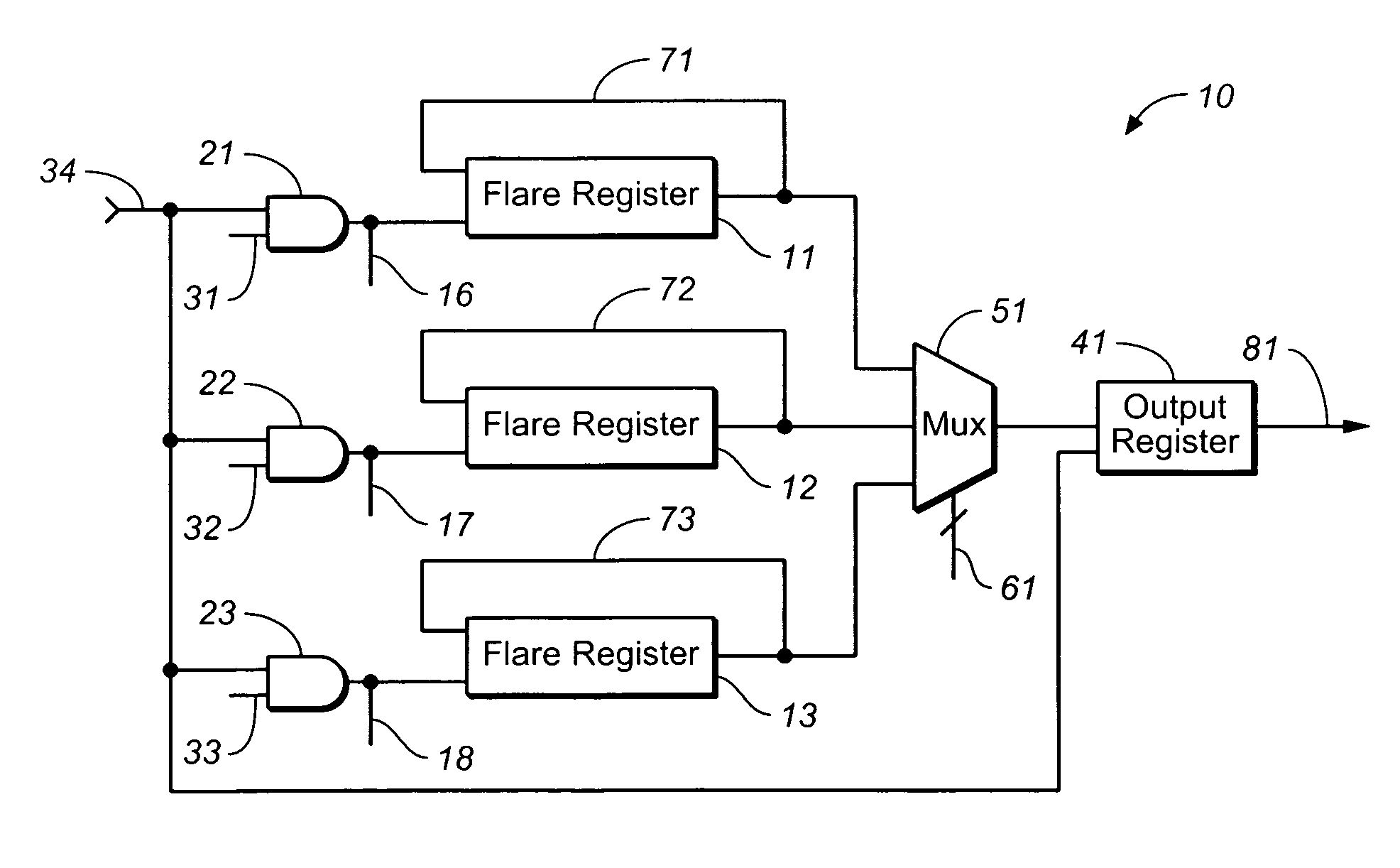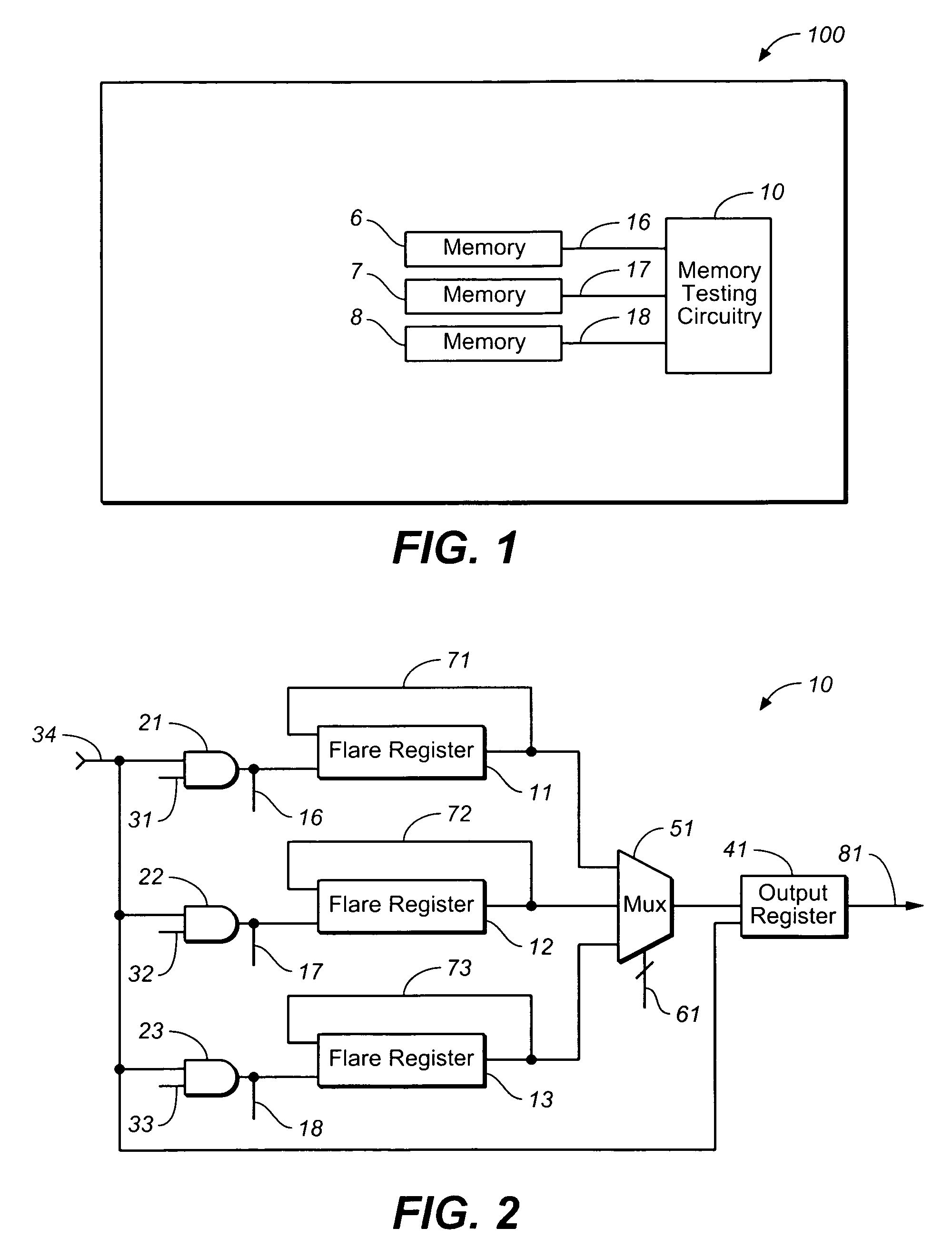Testing implementation suitable for built-in self-repair (BISR) memories
a technology of built-in self-repair and memory, applied in the direction of instruments, mechanical equipment, operating means/releasing devices of valves, etc., can solve the problems of high manufacturing difficulty, large test development cost, and high production cos
- Summary
- Abstract
- Description
- Claims
- Application Information
AI Technical Summary
Problems solved by technology
Method used
Image
Examples
Embodiment Construction
[0015]Referring now to the drawings and, more particularly to FIG. 1, a schematic diagram of an integrated circuit including memory testing circuitry constructed according to principles of the present invention is shown. In FIG. 1, an integrated circuit 100 such as an ASIC includes one or more memories with BISR logic. For purposes of explanation and example, FIG. 1 shows three memories with BISR logic represented by reference characters 6, 7 and 8. It should be intuitive, however, that any number of such BISR memories may be included on the integrated circuit 100, and that the elements shown in the drawings are not necessarily to scale. Outputs from the BISR memories 6, 7 and 8 are provided to memory testing circuitry 10 via input lines 16, 17 and 18, respectively.
[0016]Referring now to FIG. 2, a schematic diagram of the semiconductor memory testing circuitry 10 constructed according to principles of the present invention is shown. In FIG. 2, flare registers 11, 12 and 13 (which ar...
PUM
 Login to View More
Login to View More Abstract
Description
Claims
Application Information
 Login to View More
Login to View More - R&D
- Intellectual Property
- Life Sciences
- Materials
- Tech Scout
- Unparalleled Data Quality
- Higher Quality Content
- 60% Fewer Hallucinations
Browse by: Latest US Patents, China's latest patents, Technical Efficacy Thesaurus, Application Domain, Technology Topic, Popular Technical Reports.
© 2025 PatSnap. All rights reserved.Legal|Privacy policy|Modern Slavery Act Transparency Statement|Sitemap|About US| Contact US: help@patsnap.com



